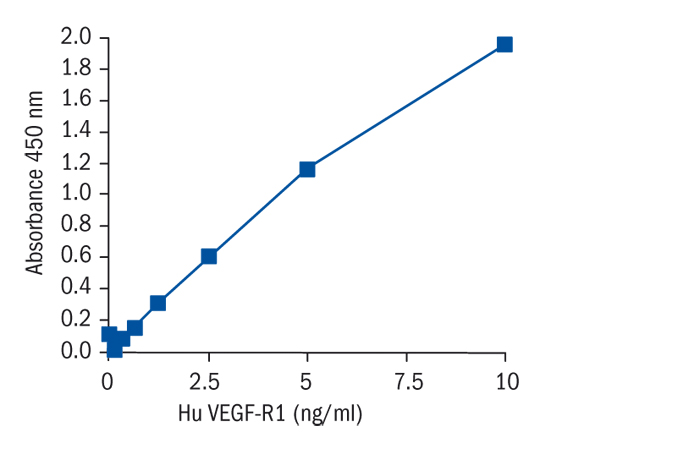Type
Sandwich ELISA, Biotin-labelled antibody
Description
The Human sVEGF-R1 ELISA is an enzyme-linked immunosorbent assay for the quantitative detection of Human sVEGF-R1.
Applications
Serum, Plasma-EDTA, Plasma-Citrate, Cell culture supernatant
Sample Requirements
50 µl/well
Shipping
On blue ice packs. Upon receipt, store the product at the temperature recommended below.
Storage/Expiration
Store the complete kit at 2–8°C. Under these conditions, the kit is stable until the expiration date (see label on the box).
Calibration Curve
Calibration Range
0.16–10 ng/ml
Limit of Detection
0.03 ng/ml
Intra-assay (Within-Run)
CV = 5.5%
Inter-assay (Run-to-Run)
CV = 5.1%
Dilution Linearity
serum 128%, EDTA plasma 125%, citrate plasma 102%, cell culture supernatant 116%
Specificity
The assay detects both natural and recombinant Human sVEGF-R1. The cross reactivity and interference of circulating factors of the immune system was evaluated by spiking these proteins at physiologically relevant concentrations into a Human sVEGF-R1 positive sample. Interference was detected for VEGF-A at concentrations > 0.15 ng/ml and for PLGF-1 at concentrations > 2.5 ng/ml.There was no cross reactivity or interference detected for KDR, PDGFAA, PDGF-BB, VEGF-B, VEGF-C, VEGF-D, HGF, EGF.

